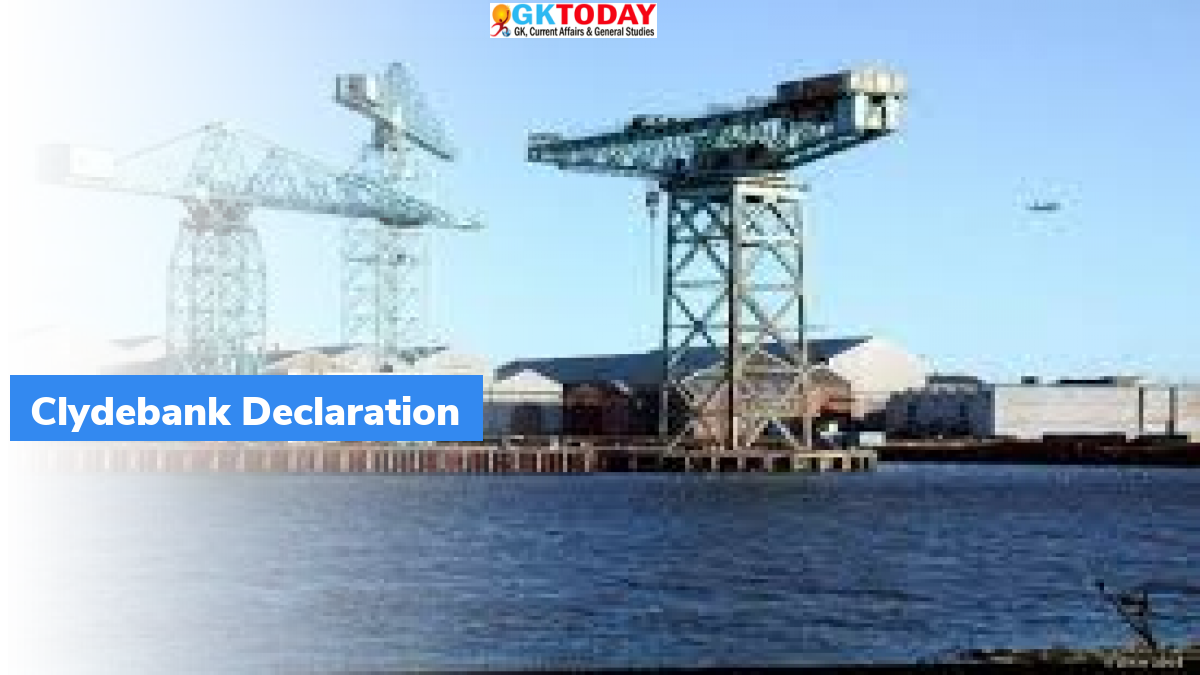Clydebank Declaration
The Clydebank Declaration was signed at the COP26 Climate summit held in Glasgow in November 2021. Under the declaration, the signatories agreed to work together to support the establishment of green shipping corridors.
What is Clydebank Declaration?
The signatories of the Clydebank Declaration will establish zero – emission maritime routes between two or more routes. These routes are called green shipping corridors. The objective is to establish six green corridors by the middle of the decade, that is by 2025. Under the declaration, more than two hundred businesses have committed to increase and commercialize zero emission fuels and vessels by 2030. Also, the buyers such as Ikea, Amazon, Patagonia, Michelin have already announced that they will buy only zero carbon freight from 2040.
What are the pledges of the declaration?
Under the declaration, the countries pledged to achieve the following:
- To facilitate the establishment of partnerships, operators along the value chain
- To accelerate decarbonization of shipping sector
- To reduce the fuel supply to the shipping sector by establishing green shipping corridor
- To identify and explore barriers in green corridor establishment. This includes regulatory framework, information sharing, incentives.
- To consider including green corridors in National Action Plans
Which countries signed Clydebank Declaration?
The Clydebank Declaration was signed by Australia, Belgium, Chile, Costa Rica, Fiji, Denmark, Finland, Fiji, France, Republic of Ireland, Germany, Japan Italy, Morocco, Republic of Marshall Islands, Netherlands, Spain, Norway, Sweden, USA and UK.
What is the need for Clydebank Declaration?
According to S and P Analytics, the global maritime shipping accounts for 2.5% to 3% of global carbon dioxide emissions. The deep-sea vessels contribute to 85% of total maritime emissions. It is highly difficult to decarbonize such vessels. This is mainly because of their high energy density fuel usage. In such scenario, the best alternative solution is the green fuels such as liquid hydrogen methanol and ammonia.
Why “Clydebank”?
The declaration was named as “Clydebank” to pay tribute to the heritage city Clydebank and to the River Clyde. The Antonine Wall is in Clydebank. It was declared the World Heritage Site in 2008. The wall was a turf fortification. It was built by the Romans. Also, Clydebank is one of the major ship building centre.


